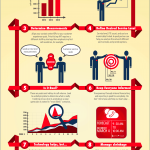Learning How To Keep Staff At 40 Hours Per Week
Come December 1, a lot more people must be paid by the hour.
For years, many white collar workers have collected salaries. Their paychecks have not been tied to how many hours they worked. In labor law parlance, such workers were “exempt” from regulations requiring overtime pay (generally time and a half) after 40 hours per week. On December 1, the general bar for exemption, based on federal law, will move from $455 per week ($23,660 per year) to $913 per week ($47,476 per year). Note: These changes only concern federal law. States and cities may have their own rules that employers should be aware of.
This more than doubling is a big deal. Employers will need to ensure compliance, with a lot of eyes on them as they do so. Jeff Gilbreth, a labor and employment partner at Nixon Peabody’s Boston office, explains: “It is unusual for developments in labor and employment law to receive such coverage from mainstream media.” Slip-ups can mean big liability.
So what are managers to do when supervising people earning in this range? Gilbreth notes that there are a few choices. You can increase people’s pay to $913 a week so they stay exempt. You can come up with an estimated average of hours worked, which may be more than 40, and then calculate an employee’s hourly rate based on 40 hours at base pay and north of that at overtime rates.
So, for instance, if someone earns $770 per week for 50 hours, this is $14 per hour (40 x 14 = $560, plus 10 x 21 = $210). Of course, this still isn’t a set-it-and-forget-it move. “The manager needs to monitor the employee’s workload and make sure the estimated number of hours worked is actually occurring in practice,” Gilbreth says. Plus, if the hours are too high, the rate becomes too low (and may run afoul of local/state minimum wage laws).
That leaves another option: Try to keep people as close to 40 hours a week as possible to minimize overtime hits. Here are some ways to do just that.
Be Clear That Times Have Changed
“A challenge after December 1 is that many employees who are now non-exempt will not be used to limiting their working time—as exempt employees they worked as much as they needed to get their work done,” Gilbreth says. Everyone up and down the line needs to know that throwing hours at a problem is going to be very expensive if the solution involves non-exempt employees.
This can be a good opportunity to change the culture. “People don’t know how to evaluate the increasingly complex work that knowledge workers are doing, and so instead of measuring what people do, they jump to measuring how much,” says Erin Reid, an associate professor for human resources and management at the DeGroote School of Business at McMaster University, and a frequent Harvard Business Review contributor. Emphasize that output, not working more hours than colleagues, is the key to advancement.
Embrace Tracking
The reality is that you will have to track hours for lots more people anyway. Why not get the benefits of doing it for everyone, and keep records of what people do (not just the quantity of hours)? This can “motivate employees to be as productive as possible when they are ‘on the clock,’” Gilbreth says.
It can also introduce a much-needed dose of reality into organizations. “My research suggests that most white collar workers have a hazy idea of how many hours they work, and an even less clear sense of how much their colleagues work,” says Reid. “I have found that people can be quite quick to assert a number—e.g. insisting that they put in 60 hours a week—but when you ask them to break down how they spent a workday, the actual number often looks quite different.” Reid has also found incredible gaps between colleagues; at one consulting firm, she notes, some people claimed 70-hour weeks, and others at the same level claimed 50. If they’re getting the same amount done, best to study what the 50-hour sorts are doing.
Try Flexible Hours
While it might seem smart to spell out exactly when people should work, that’s not the only way to approach the problem. If you’re trying to hold people to 40 hours, you want those 40 hours to be as productive as possible. “Companies and managers and employees lose when employees are forced to work when they’re tired or unmotivated,” says Caroline Beaton, a millennial expert at kununu, a workplace insights platform. A night owl who’s useless before 10 a.m. but who’s forced to come to work at 8 a.m., is only going to put in six good hours for the eight he’s paid, she explains. Allow people to control their hours (with the requirement that people be present during some core hours), and you can potentially increase the productivity ratio.
Streamline And Automate
“At the heart of efficiency is prioritization,” says Beaton. “These new laws can be an impetus to evaluate what actually matters in the grand scheme. What’s critical to the mission? What’s superfluous?” she suggests asking. Get rid of anything that doesn’t add value. Automate processes wherever possible, and do skills training to help employees speed up things they do frequently.
Limit Meetings
One survey found that a quarter of workers say they attend five or more unnecessary meetings per week. That can be the difference between a 40-hour workweek and a 45-hour workweek right there. Beyond requiring agendas and timekeepers, “set very clear limits on when meetings can happen,” suggests Reid. “For example, organizations can insist that all meetings began and end sometime between 9 a.m. and 5 p.m.” The downward pressure a narrow window allows “could be good for productivity in general,” says Reid.
Curtail After-Hours Email
One big headache with the new labor laws: Time spent checking and responding to emails and phone calls is officially work time. Because of this, Gilbreth notes that some organizations are considering taking away mobile devices from non-exempt employees come December 1. This would limit the chances that inefficient after-hours email checking turns into a big overtime bill (without enough gained to justify it).
Even if you don’t go that far, recognize that “email is a big culprit in the creeping expansion of the workday, and it is a big reason why people feel that they are always on, and eventually burn out,” says Reid. So, in general, “do not send or respond to emails after regular work hours.” This can encourage more thoughtful communication.
If people want to work flexible hours, encourage setting aside an actual block of time to read and respond to emails, rather than doing it in bits and pieces. Also, responses can be saved as drafts and sent out during regular hours to limit potential overtime hits to other people.
Push Back On Client Expectations
If clients want the moon, they need to pay for covering the overtime bills that will result. Building this into negotiations can help everyone reach clarity on the scope of work, and can help keep hours under control.
Plan The Work
Many long hours are driven by pre-deadline emergencies that could have been avoided with better planning. If managers plan work flows well, allowing space for things to go wrong, this can reduce pressure to go far north of 40 hours in the last weeks before major deadlines.
When that’s not possible? “If you know a huge event or project is approaching, make a conscious choice about whether you’re going to take the overtime hit or start rationing hours,” Beaton says. That way employees can plan their lives, too.
related video: Managing Maestro Shep Gordon Reveals His Surprising Secrets For Success
Fast Company , Read Full Story
(11)














